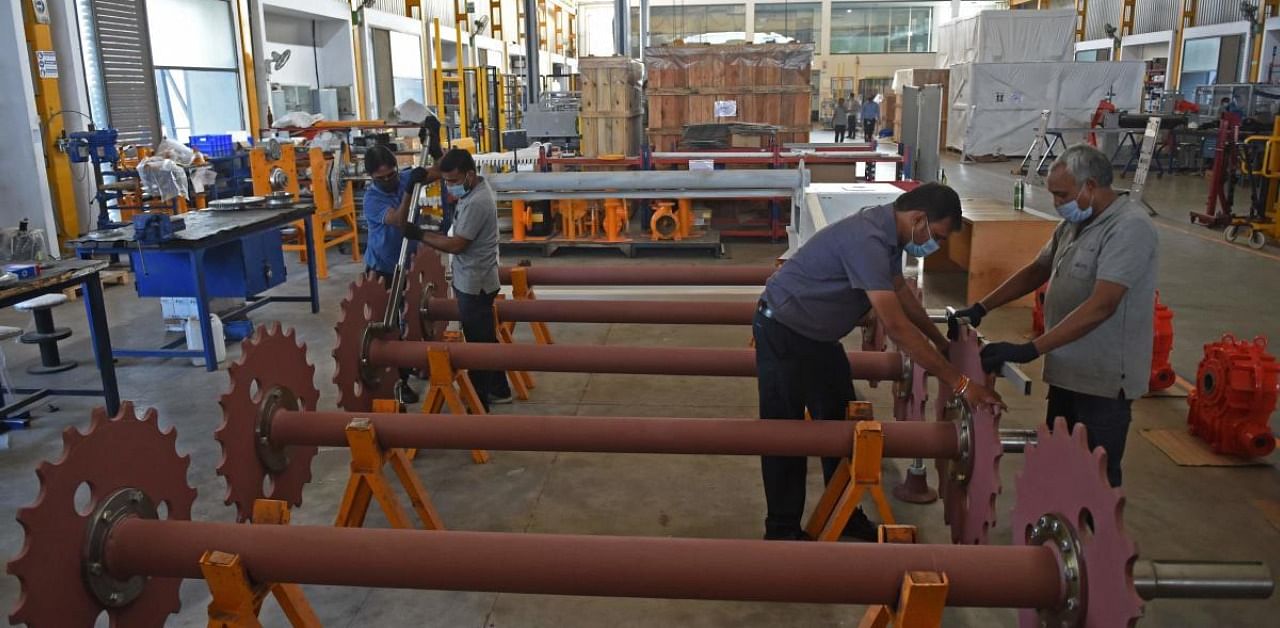

Last week, when the government announced the September quarter growth numbers, it left everyone puzzled -- gross value added by the manufacturing sector had grown 1.7% annually at a time when Index of Industrial Production (IIP) was shrinking.
The answer for this conundrum lies in the earnings of India Inc. And the picture is scary: the country is witnessing growth led by shrunk wages and huge operating profit -- a trend which is a cause of concern for many reasons.
The net sales or the top line of the manufacturing sector, during the September quarter, had shrunk by 10.3% to Rs 8.39 lakh crore from Rs 9.36 lakh crore during the corresponding quarter last year. However, despite this double-digit shrinkage in the topline, the operating profit of the manufacturing sector companies has surged by a whopping 16% to Rs 1.46 lakh crore, data sourced from CARE Ratings shows.
The GVA is calculated by adding back the employee expenses (which majorly covers wages) to the operating profits -- basically an aggregation of all incomes both at the corporate and personal level. The employee costs in the manufacturing sector, during the second quarter, have shrunk to Rs 52,609 crore from Rs 53,279 crore -- a drop of 1.26% owing to pay-cuts and rationalisation of salaries across the board.
In an ideal scenario, a drop in the wages would have led to a decrease in the GVA in the manufacturing sector -- which makes about 16% of India's total GVA.
Despite the dip in employee cost, the sum of operating profit and employee benefit cost grew by a healthy 10.87% to Rs 1.98 lakh crore from Rs 1.79 lakh crore.
The reason behind this was the drop in the expenditure of the manufacturing companies -- ranging from the lower cost of raw materials because of a dip in demand, lesser electricity, and fuel charges as most companies are working with limited staff in their offices.
Higher operating profits in a shrinking economy suggests that the share of wages in the economy has come down. To put it in other words, we are witnessing growth led by profits and cost realisation, rather than growth in wages.
"Profits have risen (Y-on-Y) on account of cost rationalisation measures as well as the corporate tax rate cut," says Kavita Chacko, Senior Economist at CARE Ratings.
According to SBI Chief Economist Soumya Kanti Ghosh, the smaller firms have seen more aggressive cost-cutting, with some of them cutting the employee costs by up to 10-12%.
One may debate over the fact that growth in wages would lead to inflation in the country, but this can be countered in a country where food -- a basic necessity -- makes up 45.86% of the retail inflation basket. Probably that is the reason inflation is rising over 7% at a time when salaries of the people have been coming down.
But on the other hand, some analysts that DH spoke to said, a profit-led growth along with dip in the wages at the same time, in a country that is already witnessing growing income and economic inequality, is worrisome.
According to the US Central Intelligence Agency (CIA) Factbook, India has a Gini Index of 35.2 and ranks 95th among 157 countries. Gini index measures the degree of inequality in the distribution of family income -- the lower the index, the better the income distribution.
"The absorption of economic shock is more possible with the increase in income. The lower the income, the more the vulnerability," an analyst said.
Also, according to economists, this kind of growth might work and be effective in a stressful situation, but can't be sustained in a long run.
While a recovery might have been projected as some kind of victory by the government, such a recovery led by profits will be stress-tested in an economy with excess capacity -- where the cost of raw materials will shoot up along with other operating expenses.